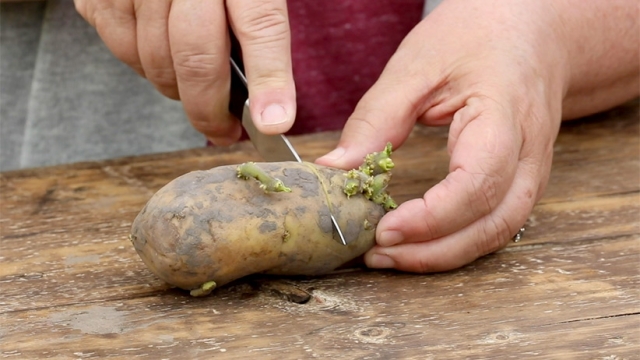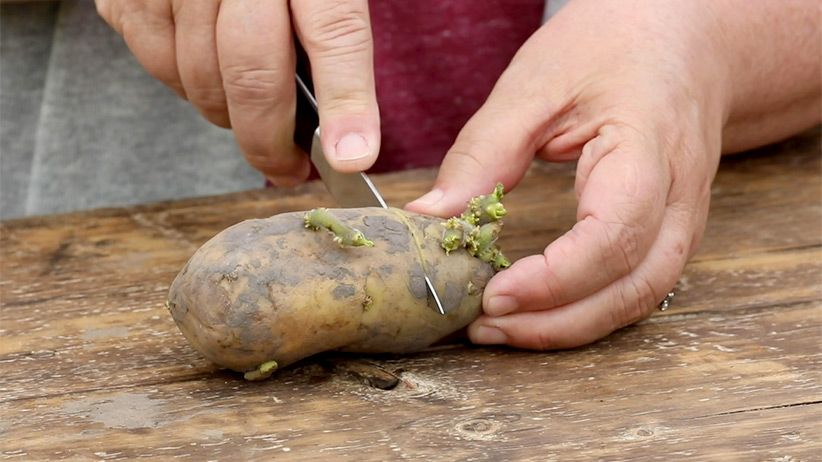Potato planting is a fascinating endeavor that combines both skill and patience. Whether you’re an experienced gardener or just starting out, successfully growing your own potatoes can be a rewarding and satisfying experience. From selecting the right potato variety to preparing the soil and ensuring optimal growing conditions, there are several secrets to uncover for a successful potato harvest.
One key aspect to consider when embarking on your potato planting journey is choosing the right potato variety. With countless varieties available, each with its own flavor and texture, it’s important to select the variety that best suits your needs and preferences. Some popular options include Yukon Gold, Russet, and Red Pontiac, each offering unique characteristics that can enhance your culinary endeavors.
Furthermore, understanding the importance of companion planting can greatly contribute to the success of your potato crop. Companion plants, when strategically chosen, can benefit potatoes by deterring harmful pests, improving soil nutrients, and even enhancing flavor. Some suitable companion plants for potatoes include marigolds, horseradish, and beans, all of which can help create a thriving and harmonious garden ecosystem.
By delving into the art of potato planting and exploring the secrets of successful cultivation, you’ll be well on your way to enjoying a bountiful harvest of nutritious and delicious potatoes. From selecting the perfect potato variety to incorporating beneficial companion plants, every step contributes to creating a thriving potato patch filled with flavorful tubers waiting to be unearthed. So grab your gardening tools and join us on this potato planting adventure as we unlock the secrets to growing an abundant, vibrant, and fruitful potato garden.
Choosing the Right Potato Varieties
When it comes to successful potato planting, selecting the right potato varieties is crucial. The choice of varieties can greatly influence the overall yield and quality of your harvest. Understanding the different characteristics of each potato variety will help you make informed decisions for your potato planting endeavors.
Early Varieties: Early potato varieties are ideal for those who want to enjoy their homegrown spuds sooner rather than later. These varieties have a shorter growing season and tend to mature faster. They are perfect for regions with a shorter growing season or for gardeners who simply can’t wait to taste their freshly harvested potatoes.
Main Crop Varieties: Main crop potato varieties are known for their excellent storage capabilities. These varieties take longer to mature compared to early varieties, but they yield a larger amount of potatoes per plant. Main crop varieties are a popular choice for those who want to store their potatoes for an extended period or for those looking to produce a bigger harvest.
Specialty Varieties: If you’re looking to add a touch of uniqueness to your potato planting, specialty potato varieties are worth considering. These varieties come in various colors, sizes, and flavors, allowing you to experiment with different culinary creations. From vibrant purple potatoes to fingerling varieties with a rich buttery taste, specialty varieties can elevate your culinary adventures and impress your dinner guests.
By understanding the characteristics and purposes of various potato varieties, you can choose the right ones that align with your goals and preferences. Whether you prefer early varieties for their quick yield, main crop varieties for their storage potential, or specialty varieties for their uniqueness, selecting the right potato varieties is a crucial step towards a successful potato planting journey.
Companion Plants for Potato Planting
Marigolds: Marigolds are excellent companion plants for potato planting. Their vibrant flowers not only add a touch of beauty to your garden, but they also offer numerous benefits. Marigolds naturally repel harmful insects such as nematodes and aphids, which can damage potato plants. By planting marigolds alongside your potatoes, you can help protect them from these destructive pests and promote healthy growth.
Organic Soil
Horseradish: Another valuable companion for potato planting is horseradish. This pungent herb acts as a natural deterrent for pests like potato beetles and aphids. Its strong aroma wards off these unwanted visitors, keeping your potato plants safe and healthy. Additionally, horseradish has deep roots that help break up compacted soil, improving overall soil health and enhancing the growth of your potatoes.
Beans: Beans are not only a delicious addition to your meals but they also make great companions for potato plants. Planting beans near your potatoes can benefit both crops. The climbing nature of beans provides shade and helps cool down the soil, which is beneficial for potatoes, especially in hot climates. In return, potato plants provide a sturdy trellis for beans to grow on, maximizing vertical space in your garden. This symbiotic relationship between the two plants is a win-win situation for both.
Remember, when planning your potato planting, consider incorporating these companion plants to enhance the health and productivity of your crop. By strategically choosing companion plants like marigolds, horseradish, and beans, you can create a harmonious garden ecosystem that supports the growth of your potato plants.
Tips for Successful Potato Planting
Soil Preparation:
Before planting your potatoes, it is crucial to prepare the soil properly. Start by clearing the planting area of any weeds or debris. Then, loosen the soil using a garden fork or tiller, ensuring it is well-drained and friable. Potatoes thrive in loose soil, as it allows their roots to develop easily and promotes good tuber formation. Adding organic matter such as compost or well-rotted manure can also improve soil structure and provide essential nutrients.Choosing the Right Location:
Select a sunny location for your potato planting. Potatoes require at least six to eight hours of direct sunlight daily to grow and produce a bountiful harvest. Ensure that the chosen site has good air circulation to prevent the buildup of moisture and reduce the risk of diseases. Additionally, avoid areas prone to flooding or standing water, as excess moisture can cause tuber rotting.Companion Planting:
Consider companion planting to maximize the growth and health of your potato plants. Certain plants can enhance potato growth by attracting beneficial insects, repelling pests, or providing natural shade. Some common companion plants for potatoes include marigolds, horseradish, and beans. However, keep in mind that not all plants are compatible with potatoes, so do thorough research before deciding on companion plants.
Remember, by following these tips, you can increase the chances of successful potato planting and enjoy a fruitful harvest. Happy gardening!


